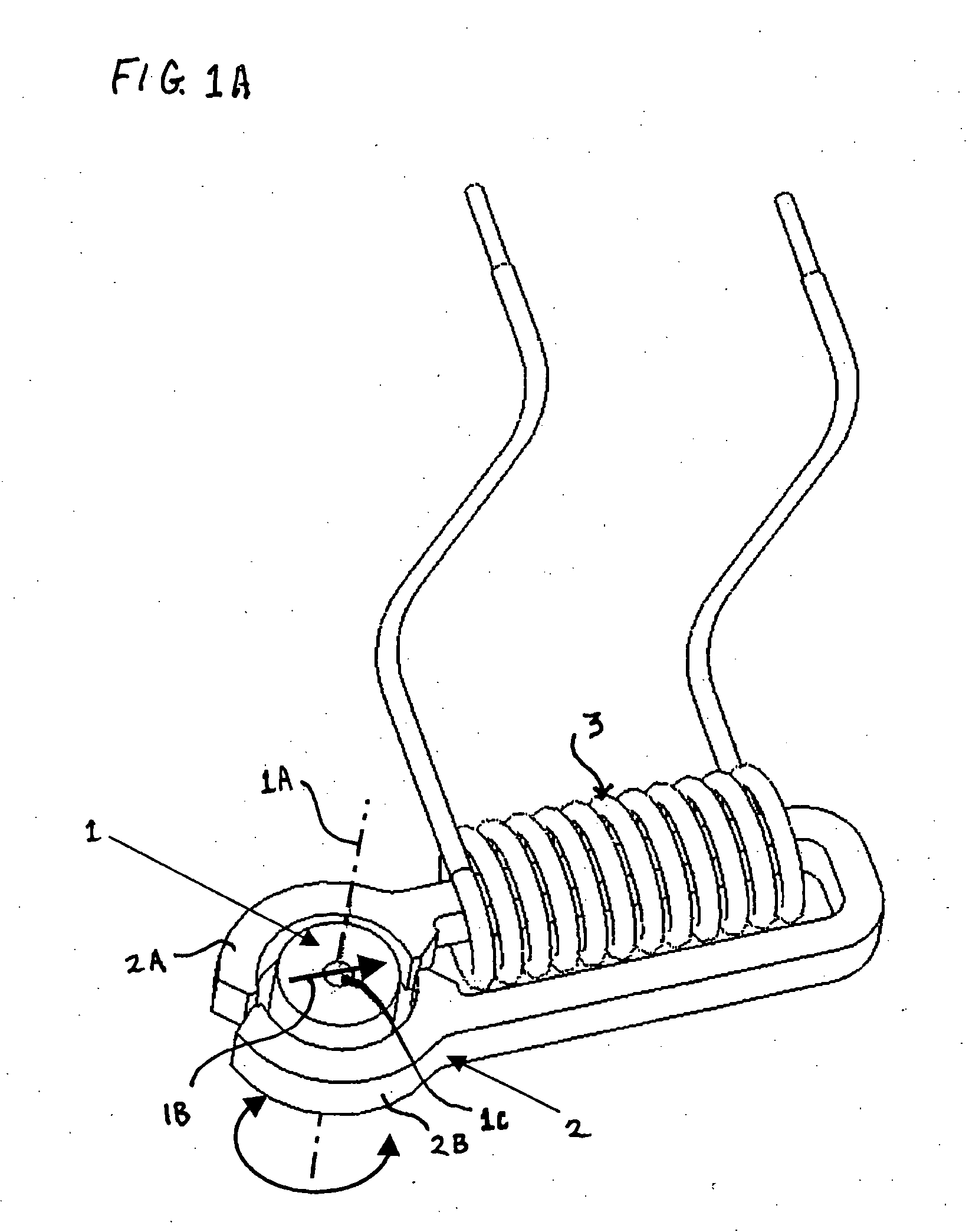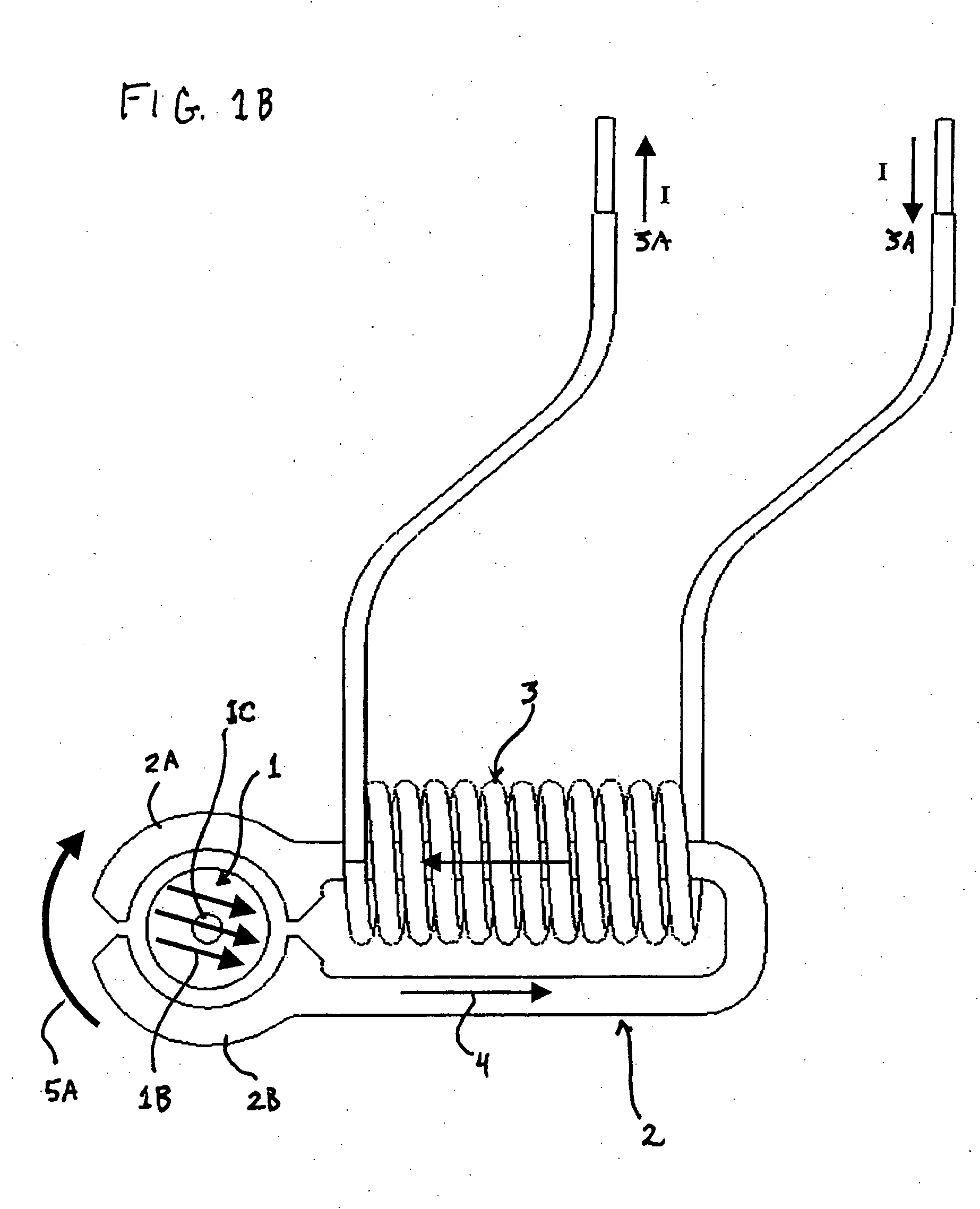Rotor magnet driven optical shutter assembly
a technology of optical shutters and magnets, applied in the field of electromagnetically driven optical shutters, can solve the problems of inherently very non-linear force curves, low energy efficiency, high heat, etc., and achieve the effects of low cost manufacturability, simple structure, and long li
- Summary
- Abstract
- Description
- Claims
- Application Information
AI Technical Summary
Benefits of technology
Problems solved by technology
Method used
Image
Examples
Embodiment Construction
[0050] The basic underlying principles of the invention, as initially set forth in the summary of the invention, can be better understood by reference to FIGS. 1A, 1B, and 1C. In FIG. 1A, a cylindrical rotor magnet 1 rotatable on a central axis 1A and having a polarization denoted by polarization indicator arrow 1B is positioned between first pole 2A and second pole 2B of two arms of a stator 2. (In this specification and in the claims that follow, the term “magnet” is reserved for a non-electromagnet). The position of rotor magnet 1—as indicated by arrow 1B—is initially and illustratively set at a neutral point between poles 2A and 2B in order to show the torques produced by different magnetic polarizations of stator 2. Stator 2 is, in turn, wrapped by an electromagnet drive coil 3 such that its can serve as an electromagnet with its polarization determined by the direction of current in electromagnet drive coil 3.
[0051] In FIG. 1B, the direction of current flow through electromag...
PUM
 Login to View More
Login to View More Abstract
Description
Claims
Application Information
 Login to View More
Login to View More - R&D
- Intellectual Property
- Life Sciences
- Materials
- Tech Scout
- Unparalleled Data Quality
- Higher Quality Content
- 60% Fewer Hallucinations
Browse by: Latest US Patents, China's latest patents, Technical Efficacy Thesaurus, Application Domain, Technology Topic, Popular Technical Reports.
© 2025 PatSnap. All rights reserved.Legal|Privacy policy|Modern Slavery Act Transparency Statement|Sitemap|About US| Contact US: help@patsnap.com



